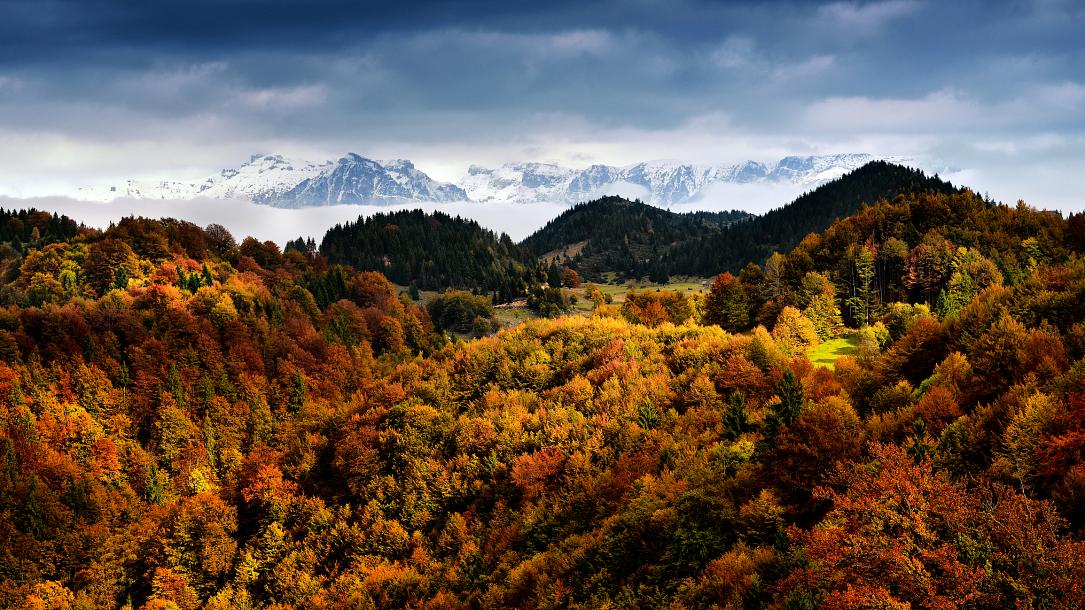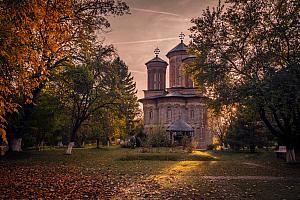Romania Photo of the Day by Dreamstime: Carpathian Mountains in autumn colors

The Romania Photo of the Day created in partnership with stock photo provider Dreamstime aims to highlight the best of Romania. From stunning landscapes and popular tourist destinations and landmarks to people, traditions, and food, this series helps you discover Romania one photo at a time. This week, we put the focus on beautiful Romanian landscapes in autumn colors.
Wild and beautiful, the peaks of the Carpathian Mountains jut out against the sky, while below many four-legged beasts live out their life in an ancient forest and rare flowers bloom, nestled in the grass or amongst tangled roots. (Photo source - click on the number to get to the photo 111314327 | Gutescu Eduard | Dreamstime.com)
On the Transylvania plateau, guarded by the mountains, says responsibletravel.com, crumbling castles overlook medieval villages where communities live lifestyles whose rhythms have changed little over the centuries.
Without the fame of the Alps or the spectacular altitude of the Himalayas, says rolandia.eu, the Carpathian Mountains mesmerize with their sometimes terrifying wilderness. Here you'll find naturally-sculpted statues with strange shapes reminding you of the Sphinx or pagan temples, and thousands of caves in which fossils of large ice age animals have been found.
The Carpathians stretch from the Czech Republic through Slovakia, Poland, Hungary, and Ukraine, into Romania. But despite stretching across 7 countries, 51% of their total area spans over Romania's territory.
The name of the mountains is derived from the old Dacian tribes called Carpes or Carpi, who lived in the area of present-day Romania, stretching from the north-eastern side of the Black Sea to the fields of Transylvania.
The Romanian Carpathians are part of the eastern sector of the Carpathian Mountains and are divided into 3 geographical groups: Eastern Carpathians (split into 3 groups: The Carpathians of Maramureș and Bukovina, the Moldavian-Transylvanian Carpathians, and the Curvature Carpathians); Southern Carpathians (split into 4 groups: Bucegi Mountains, Făgăraș Mountains, Parâng Mountains, and Retezat-Godeanu Mountains); and Western Carpathians (split into 3 groups: Banat Mountains, Poiana Ruscă Mountains, and Apuseni Mountains).
According to Libertatea, the Carpathian Mountains are home to the largest number of brown bears, wolves, and lynxes in Europe. A subspecies of the Alpine chamois, Rupicapra rupicapra carpatica, lives on the high mountain ridges.
Of course, the Carpathians are the perfect place to discover by hiking or through other nature-based sporting activities.
Uncover-romania.com outlines some recommendations for each of the mountain groups:
1. The Eastern Carpathians
Hiking can be done in the Călimani National Park, Rodnei Mountains National Park, Ceahlău National Park, Maramureș Mountains Nature Park, Cheile Bicazului-Hăsmăș National Park, Putna Vrancea Nature Park.
You’ll find many easy hiking trails here, like those from Ciucaș, Rarău, and Creasta Cocoșului, and longer and more difficult routes in Rodnei and Călimani, as well as some of the most difficult rock-climbing trails in the country near the Bicaz Gorges.
2. The Southern Carpathians
Also known as the Transylvanian Alps, this high-altitude group offers challenging adventures for passionate hikers, climbers, and mountain bikers. Piatra Craiului features the longest and highest limestone ridge in the Carpathians and the Făgăraș Mountains feature the highest altitude in the country (2544 meters).
Here you can also visit the national parks of Retezat, with its 80 glacial lakes, and Cozia, home to the beautiful monastery of the same name.
Also, you can cycle or drive on the longest and highest mountain roads in the country, Transalpina and Transfăgărășan.
3. The Western Carpathians, also known as Apuseni
This group features an abundance of picturesque traditional villages and more than 400 caves. Among the most famous are the Wind Cave, which is the deepest in the country, the Bear’s Cave, Meziad Cave, and Scarisoara Cave, where you can see the biggest underground glacier in Romania and the second largest in Europe.
Visit the largest windmill park in South-East Europe, in the village of Eftimie Murgu. Here the locals continue to use traditional water mills to grind their grains.













